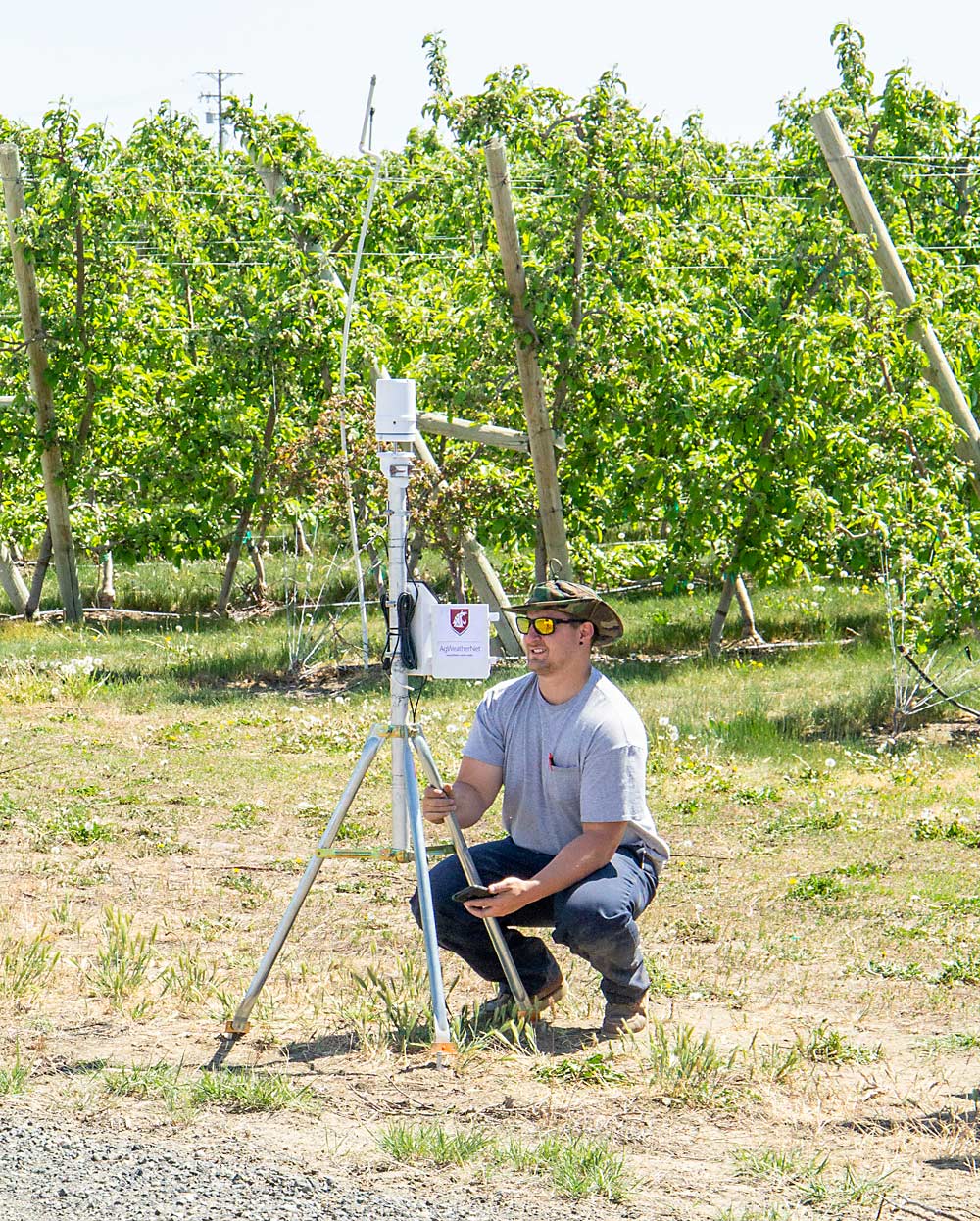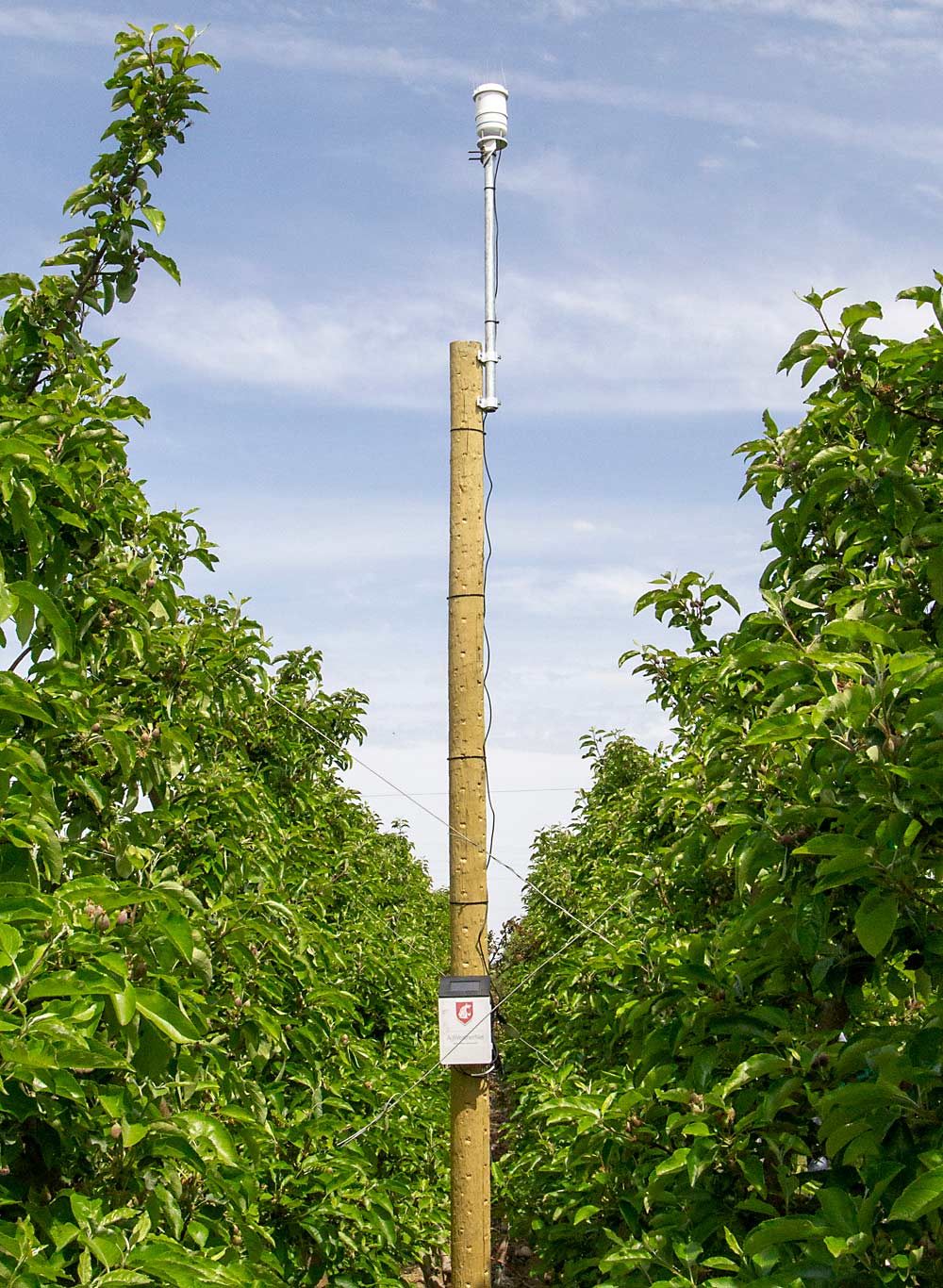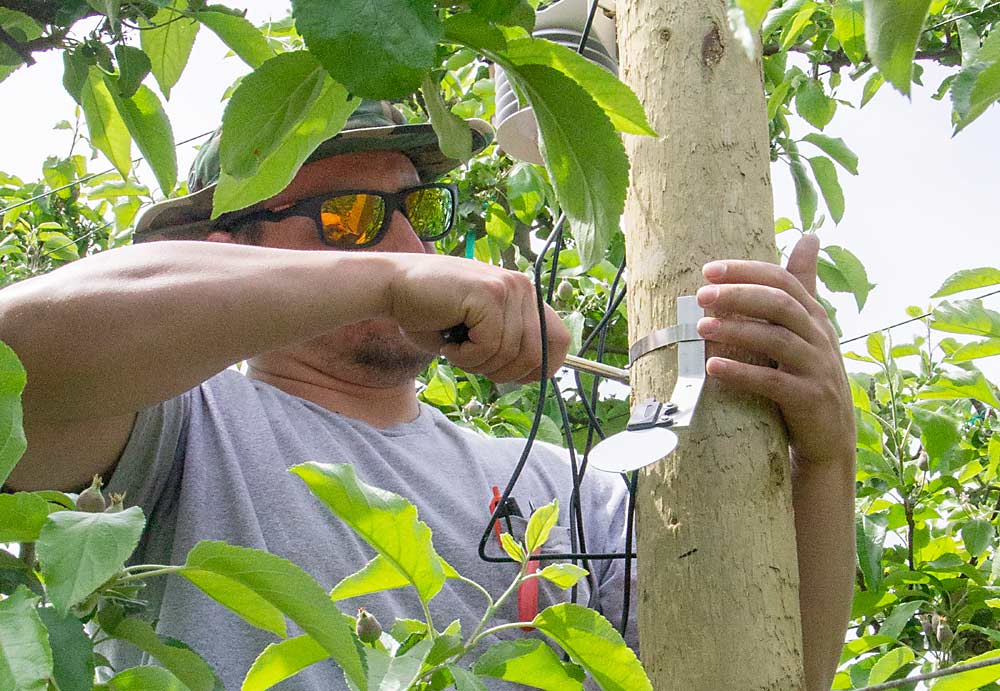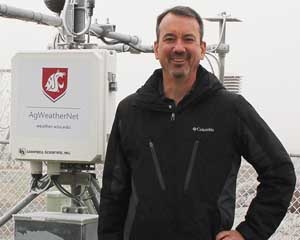
David Brown envisions a future in which growers install their own weather stations, giving them site-specific information while feeding data to a wider network for regional modeling.
“You are going to see that pretty much every orchard is going to have its own weather station in some regard,” said Brown, director of AgWeatherNet, Washington State University’s network of weather stations.
To that end, Brown launched a three-year project to measure the differences between conditions inside an orchard block, which growers care most about, to those outside the orchard on open ground, where stations typically have been located.
Reason would suggest that conditions differ somewhat between inside and outside the orchards. For example, if a grower turns on overhead cooling sprinklers, temperature drops. That’s the point of overhead cooling. Brown figures humidity and cooling would increase with under-canopy microsprinklers, too. And of course, there is always shade.
The project aims to quantify those differences, build models to estimate and predict them, and write them into machine-learning algorithms that AgWeatherNet would use to deliver orchard-specific data, forecasts and decision aid tools.
The Washington Tree Fruit Research Commission funded the project this year, with $208,000 expected over three years.

The project comes at a time of modernization for AgWeatherNet, as it moves toward three tiers of weather stations around the state.
The program, based at WSU’s Irrigated Agriculture Research and Extension Center in Prosser, is upgrading nearly 100 high-precision “anchor” weather stations that feed the National Weather Service. These first-tier stations cost more than $10,000 each. The National Weather Service helps pay for their maintenance.
Tier two consists of new ATMOS 41 stations AgWeatherNet is installing to replace roughly 75 Campbell Scientific data logger stations. Developed by the METER Group in Pullman, Washington, the all-in-one equipment costs about $2,500 each. They are much less expensive to keep up than the Campbell logger stations but provide data that is nearly as reliable for network-wide forecasts, Brown said. The units also offer the ability to track 12 weather variables through a single data logger. Before their development, the university had been considering downsizing the number of weather stations to keep up with maintenance costs, Brown said.
Meanwhile, growers who purchase and maintain their own stations — either ATMOS 41 or others — and link up with the AgWeatherNet system provide the third tier, which is what the research project is geared toward.
The goal is to achieve the more site-specific information, Brown said, and “to do that we need a lot of weather stations.”
Brown also hopes the research can help inform WSU’s Decision Aid System, a web-based network that helps growers plan their time-sensitive horticulture and pest management chores.
Accurate information always helps, said Vince Jones, a WSU entomologist and director of the Decision Aid System, or DAS. But he and colleagues researched some of the same differences about eight years ago and found that variations due to time of year and planting density don’t usually skew predictions enough to throw off pest management. Meanwhile, DAS will always have some error, Jones said. It predicts insect development based on air temperature, even though the pests live on fruit, leaves and under the bark of trees, not in the air.
“So, some error is there regardless of the source of your weather within orchard or extra-orchard,” Jones said. “What you don’t want is systematic biases that are consistent in a particular direction caused by differences in elevation, slope or aspect.”
Growers already have been installing their own weather stations because AgWeatherNet’s are sometimes 10 or more miles away from their orchards, said Paul Cathcart, orchard manager for Chiawana Orchards, which has blocks throughout Washington. His company installed several this year and has been collaborating with AgWeatherNet.
“To us, in-orchard sensing makes more sense than out-of-orchard sensing,” Cathcart said.
Cathcart anticipates the work will lead to more accurate models for controlling codling moths, fire blight, frost and irrigation. He hopes his company’s weather stations will tie into the DAS someday.

Placement within an orchard is one of the tricky hurdles. The simplest place for a grower to install a weather station is on a pole above the canopy, away from equipment and sprays. But conditions there differ from lower in the canopy, so AgWeatherNet is pairing them with lower stations that can be moved if needed.
Oregon growers in the Columbia Gorge might benefit from the research, too, said Eric Shrum, a consultant with Western Ag Improvement.
The region, a hotbed for pears and cherries near Hood River and The Dalles, is short on solid meteorological data, said Shrum, chair of the research committee for the Oregon Sweet Cherry Commission. A system installed by growers at least 20 years ago has “outlived its usefulness,” he said. So, Western Ag purchased 10 ATMOS 41 stations and installed them inside orchard blocks to inform DAS.
Brown wants to eventually plug all grower-owned stations, whether built by Rainwire, Semios or other vendors, into AgWeatherNet. The goal is to get everybody sharing weather data, dialing in their own decisions and contributing to the overall network.
“The more that everyone is in the same network, the more that everyone is learning from each other and the more accurate those projections are going to be,” Brown said. •
—by Ross Courtney








Leave A Comment